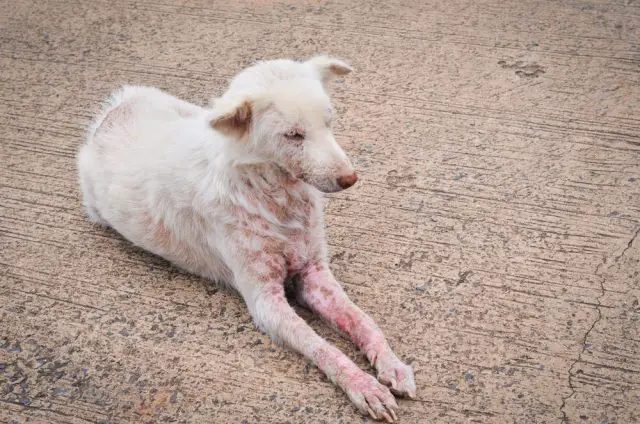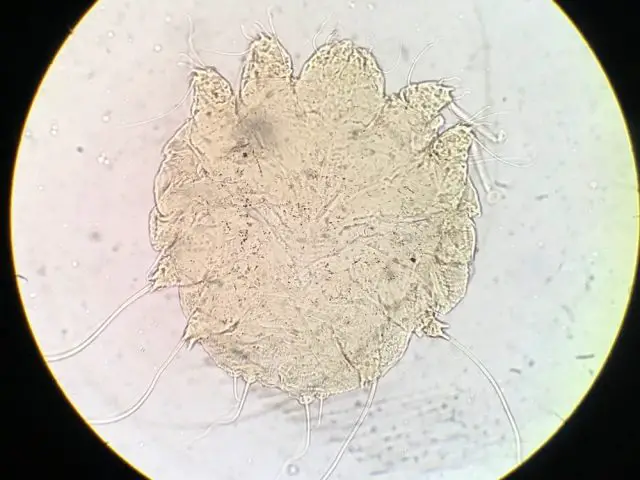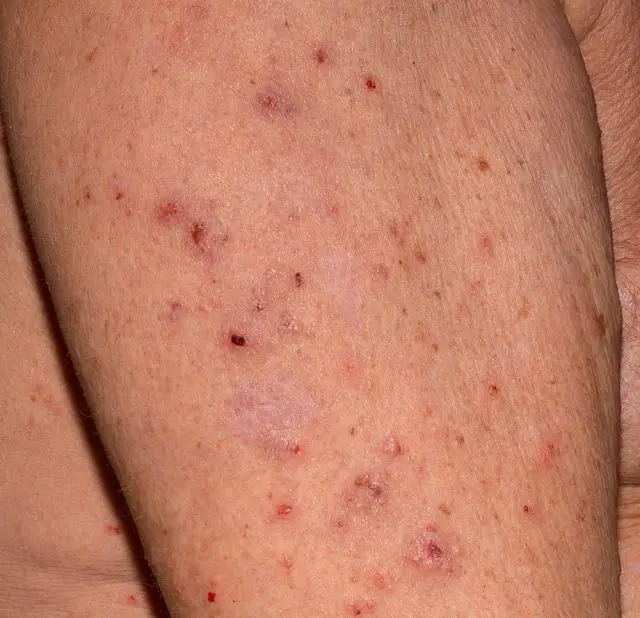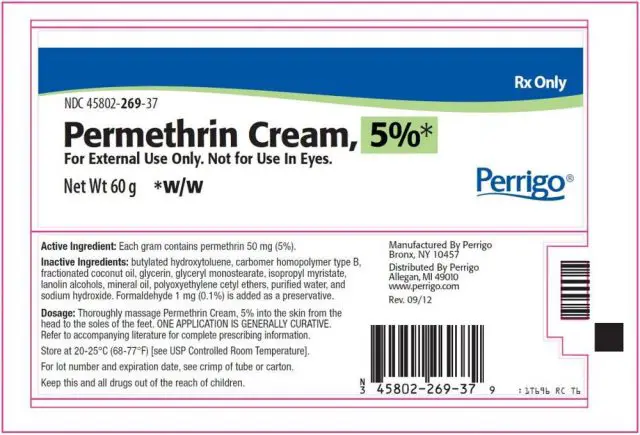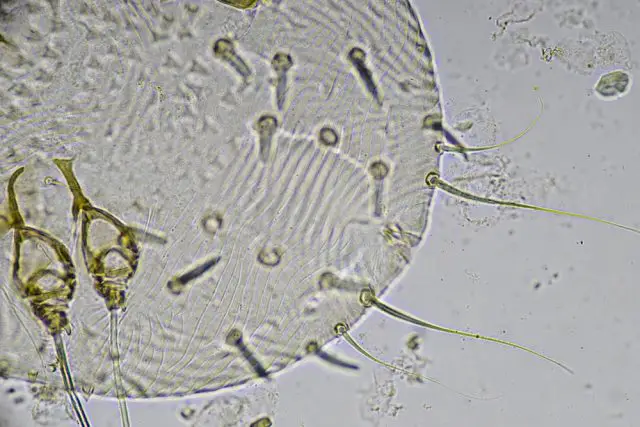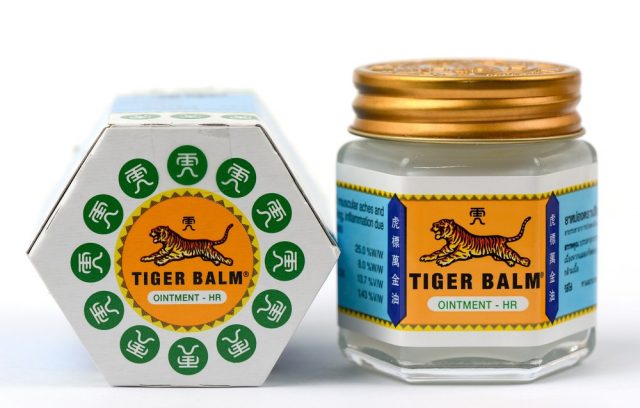How Do You Get Scabies
- What are scabies and how do you get them?
- How do you get scabies from a dog or cat?
- How do you get scabies in the first place?
- What are the symptoms of scabies?
- Is scabies contagious?
- How is scabies diagnosed?
- How is scabies treated?
- How do you get rid of scabies?
- How do you get rid of scabies with home treatment?
- What is crusted or Norwegian Scabies?
130 million people in the world are found to be infected with scabies at a given time approximately. This highly contagious skin condition spreads through infested clothing, infested bedding or through direct skin contact with the infected person.
What are scabies and how do you get them?
Scabies is a skin infection which is caused by a mite. This mite is known as Sarcoptes Scabiei. These reproduce on the surface of the skin, burrow into the skin and lay eggs in it. If left untreated, these mites can survive on the skin for months together. They cause red and itchy rashes on the skin which can be very bothersome.
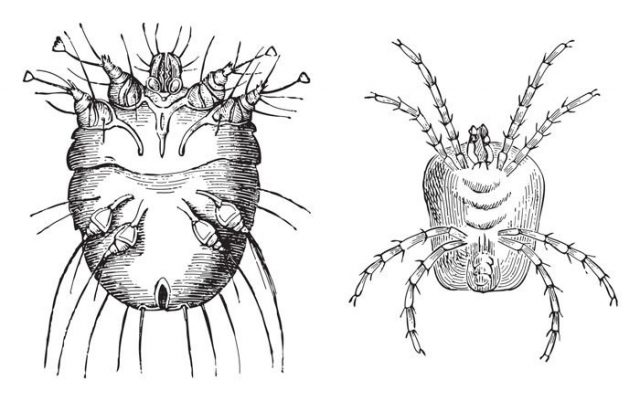
Itch mite (Sarcoptes scabiei) left and Velvet mite (Trombidium holosericeum) right / vintage illustration from Meyers Konversations-Lexikon 1897
These can be got rid of effectively by treating them with medications. Medications kill the mites and also their eggs. The doctors usually recommend treatment for the entire family of the patient because scabies is highly contagious.
How do you get scabies from a dog or cat?
Pets are generally infested with different types of mites. These mites are found more on the skins of pets than humans. Contrary to the popular myth, one cannot get scabies from a dog or a cat. Scabies are called mange when they are found on dogs and is also known as sarcoptic mange.
When these mites from the skins of pets land on human skin, they fail to survive and cause only a mild itch that does not last very long and heals on its own. Animals are not the source of the spread of scabies in human beings. The human scabies is quite worse when compared to the mange on feline pets or dogs. They need to be treated properly.
How do you get scabies in the first place?
Someone can get scabies due to any of the below mentioned ways:
- Close contact with a person infected by scabies even by holding hands or wrists.
- A very personal and prolonged contact with a partner affected by scabies.
- Sleeping with a person infected with scabies
- Sharing the clothing, towels or bedding of a person infected with scabies.
- Anyone sitting on a chair or a couch and infected with scabies can pass on the infection to anyone else sitting on the same place within 72 hours.
What are the symptoms of scabies?
The initial symptoms of scabies do not show until 6 weeks after coming in contact with the scabies mites. These symptoms develop rather quickly in those who have had an episode of scabies attack earlier.
The symptoms are:
- Rashes and itching on the different parts of the skin which gets worse during the night. These areas could be the elbows, wrist, nipples, armpits, penis, waist, buttocks and the area between ones fingers and toes.
- This scratching gets worse during night and repeated scratching leads to sores which can get further infected.
- In some rare cases and in some children, scabies can also affect the skin on the head, neck, faces and hands.
- The rash has different forms and can look like bumps under the skin, pimples, tiny bites or hives.
- Sometimes, the burrow tracks made by the mites can also be seen on the skin as tiny raised lines.
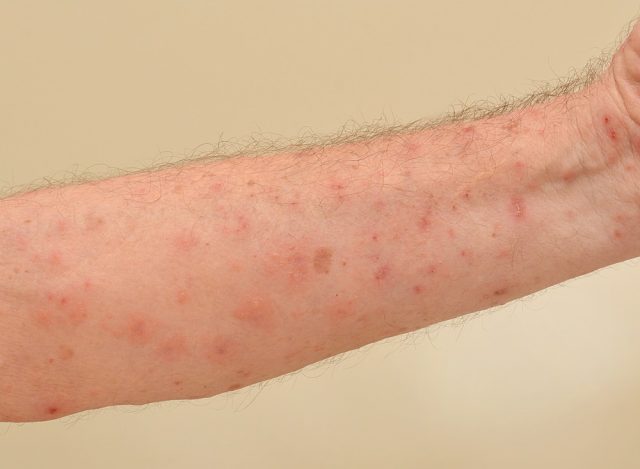
Close up of an elderly man’s inner forearm arm severely infested with Scabies mites (Sarcoptes scabiei)
Is scabies contagious?
This highly contagious skin infection can spread in the following ways:
- Prolonged and close personal contact with a person infected with scabies such as holding hands.
- Sexual contact with an infected person.
- Sharing clothes, towels and bedding with someone who is infected with scabies.
- Through schools, rehab centers, hobby centers, gyms, nursing homes and prisons.
How is scabies diagnosed?
A physician can diagnose scabies by inspecting the affected area of the skin and by performing a physical exam. In some cases, the doctor might want to be sure of the mite by trying to remove the mite with a needle. A scraped sample of the skin will be examined under a microscope to confirm presence of scabies eggs and mites.
How is scabies treated?
This infection can be effectively treated by ointments, lotions and antibiotics. Oral medications are also available to get rid of the scabies mites. The local application medication is best applied at night as the mites are most active during nighttime. A lotion may be prescribed to apply all over the body to prevent spreading of the disease by one’s own hands.
The common medications prescribed to treat scabies are:
- 25% benzyl benzoate lotion
- 5% permethrin cream
- 10% crotamiton cream
- 10% sulfur ointment
- 1% lindane lotion
- Antihistamines such as Benadryl or pramoxine lotion to control itching.
- Antibiotics to kill other skin infections developed as a result of continuous itching.
- Some steroid based creams to cure the swelling.
- In severe cases, an oral tablet of ivermectin is also prescribed to patients.
The symptoms take about a weeks’ time to lessen. It takes about 4 weeks to completely heal. Your doctor will remind you that a ‘post-scabies itch’ will be prevalent for a months’ time after the apparent healing of the infection. If the symptoms persist after 4 weeks of treatment also, then one must consult the doctor again.
How do you get rid of scabies?
The best way to get rid of scabies is to avoid direct and skin-to-skin contact with the person infected with scabies. Avoid sharing bedding, clothing and towels with other people and always prefer to use washed or personal clothes. Anyone who is found to be constantly itching his body should be advised to seek medical help and one should stay away from such people until their itching is cured. Always wash hands properly and especially the nails after itching to avoid spread of the infection.
These mites can thrive up to 72 hours even after falling from the human body and spread on others. To prevent re-infestation, one should wash the infected clothes, bedding, pillows and towels with hot water. Un-washable items should be vacuumed or kept in direct sunlight. Bleach and water is also an effective remedy to clean surfaces which might be infected.
How do you get rid of scabies with home treatment?
There are various home remedies for the effective treatment of scabies:
- Cayenne Pepper:
 Cayenne contains a compound called capsaicin which lessens the pain associated with scabies when applied on the skin. It also relieves itching as it desensitizes the neurons on the skin. Some feel that applying cayenne pepper paste on the skin will kill the mites.
Cayenne contains a compound called capsaicin which lessens the pain associated with scabies when applied on the skin. It also relieves itching as it desensitizes the neurons on the skin. Some feel that applying cayenne pepper paste on the skin will kill the mites. - Tiger Balm:
 Tiger balm is used as a local application cream to reduce burning and inflammation on the skin and to relieve one from muscle pain and aches. It works as an analgesic due to its clove oil and camphor ingredients. Though it does not kill the mites, it does provide relief against the pain while the antibiotics are working their way to kill the mites.
Tiger balm is used as a local application cream to reduce burning and inflammation on the skin and to relieve one from muscle pain and aches. It works as an analgesic due to its clove oil and camphor ingredients. Though it does not kill the mites, it does provide relief against the pain while the antibiotics are working their way to kill the mites. - Anise Seed Oil:
 The oil extracted from anise seeds has insecticidal activities. It is an effective treatment against head lice and scabies and can be used topically.
The oil extracted from anise seeds has insecticidal activities. It is an effective treatment against head lice and scabies and can be used topically. - Neem Oil:
 This is very effective in killing the mites and also restricts their growth ability and the ability to breed. It numbs the pain, relieves itching and does not cause any adverse effects. Neem oil when used with turmeric effectively cured scabies in 814 cases in India within 3 to 15 days.
This is very effective in killing the mites and also restricts their growth ability and the ability to breed. It numbs the pain, relieves itching and does not cause any adverse effects. Neem oil when used with turmeric effectively cured scabies in 814 cases in India within 3 to 15 days. - Clove Oil:
 Clove oil works as an analgesic, anti-inflammatory and anti-microbial cure for rashes and blisters caused by scabies. It proves highly toxic for the scabies mites and kills them within an hour of application. A compound called eugenol found in clove oil has higher levels of toxicity when compared to benzyl benzoate.
Clove oil works as an analgesic, anti-inflammatory and anti-microbial cure for rashes and blisters caused by scabies. It proves highly toxic for the scabies mites and kills them within an hour of application. A compound called eugenol found in clove oil has higher levels of toxicity when compared to benzyl benzoate. - RoseMary Oil:
 This oil has the potential power of stopping the infestation of the mites. It also decreases pain and prevents other infections from developing. It has a significant anti-microbial property.
This oil has the potential power of stopping the infestation of the mites. It also decreases pain and prevents other infections from developing. It has a significant anti-microbial property. - Tea Tree Oil:
 This oil contains terpenoids which is quite effective in fighting the scabies mites. The terpenoids are anti-microbial ingredients which cure the skin of scabies from top and beneath. Tea tree oil may also be used as a therapeutic option in the future as the scabies mites have started showing drug resistance against permethrin and ivermectin in some cases.
This oil contains terpenoids which is quite effective in fighting the scabies mites. The terpenoids are anti-microbial ingredients which cure the skin of scabies from top and beneath. Tea tree oil may also be used as a therapeutic option in the future as the scabies mites have started showing drug resistance against permethrin and ivermectin in some cases.
The future control of scabies in certain places or in severe cases might pose a threat in future due to the new drug resistance of the scabies mites.
What is crusted or Norwegian Scabies?
People suffering from HIV or aids or any other condition which causes a compromised immune system develop Norwegian Scabies also known as crusted scabies. It also occurs in aged people or those with Down syndrome. Scabies mites are found in large numbers in these people and are extremely contagious.
Though it affects any area of the body, it is mostly found on the scalp, feet and hands. The scales appear warty with fissures and crusts. The lesions develop an unpleasant odor. Their nails also become discolored and thick. Such patients may or may not have itching symptoms. Oral treatments done on prolonged and regular basis might help patients suffering from Norwegian Scabies.


